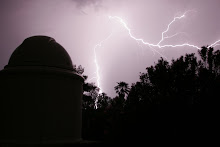Summer isn't over yet, and there's still time to observe some of the most beautiful treasures the sky has to offer. The summer Milky Way provides the best view towards the center of our galaxy, and scattered amongst the billions of stars are gigantic clouds of gas and dust. Many of these clouds (called "nebulae" by astronomers) are high-energy regions of stellar birth. Some are actively condensing nebulae in which baby stars are beginning to shine brightly. Reddish regions are warm and often surround a nursery of newborn stars seen as a cluster, and are called Emission Nebulae. Regions that are bluish in color are reflecting the light of nearby stars and are called Reflection Nebulae. This image shows several nebulous regions that are located in the summer Milky Way. At the top is M20, the Trifid Nebula. The larger region in the bottom middle is M8, the Lagoon Nebula. The nebula on the left is a complex of doubly-ionized Hydrogen regions catalogued as Sharpless 2-29, 31, and 32. Amateur telescopes (or even a good pair of binoculars) can easily be used to observe M8 and M20. I took this image in June, 2010 over several nights using a 7" telescope and CCD camera, from my backyard Xanadu Observatory. Total exposure time using 4 different filters was about 14 hours.
Friday, September 9, 2011
Subscribe to:
Comments (Atom)

